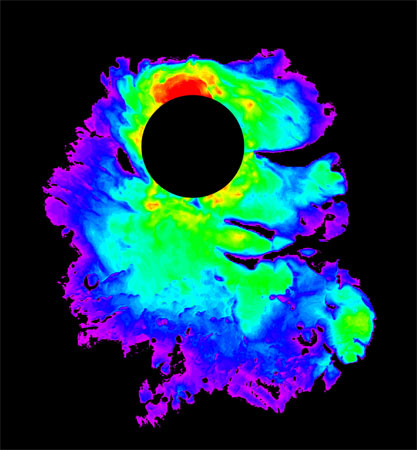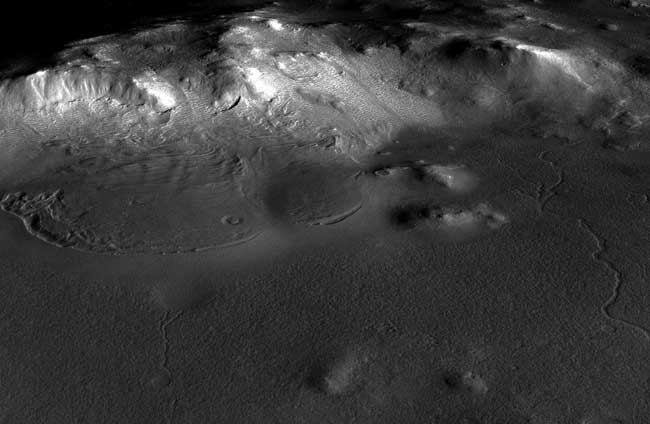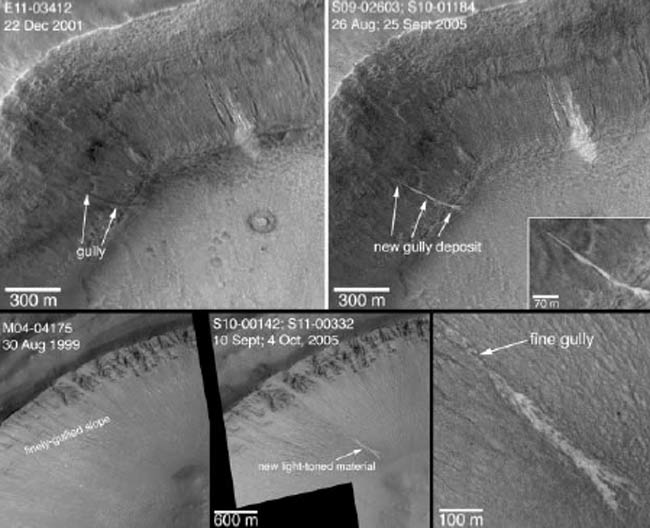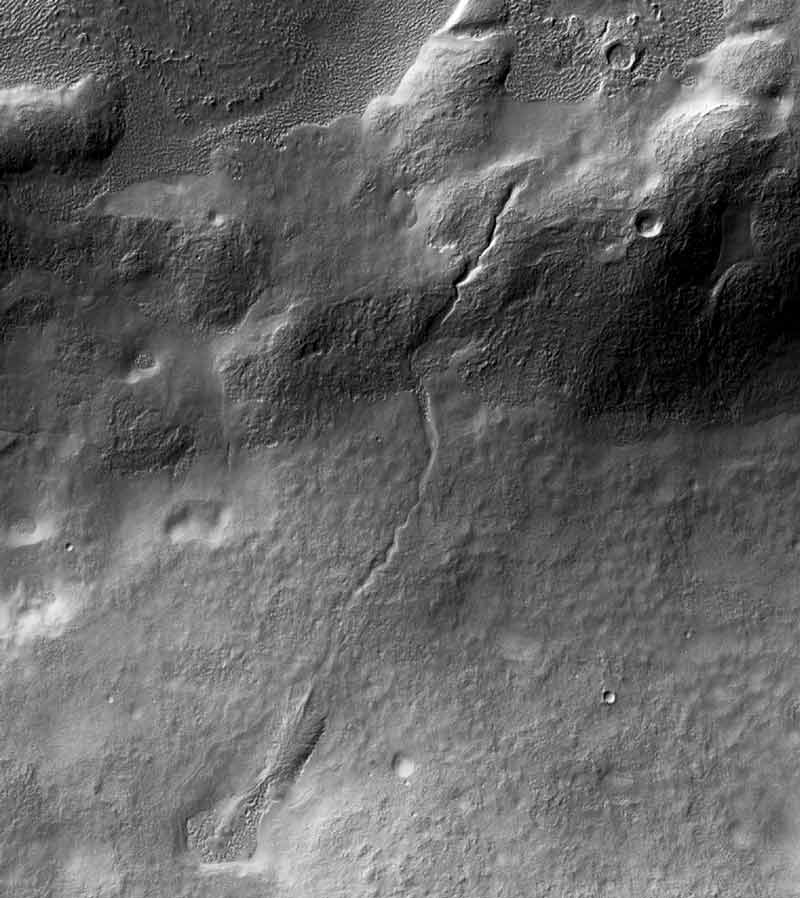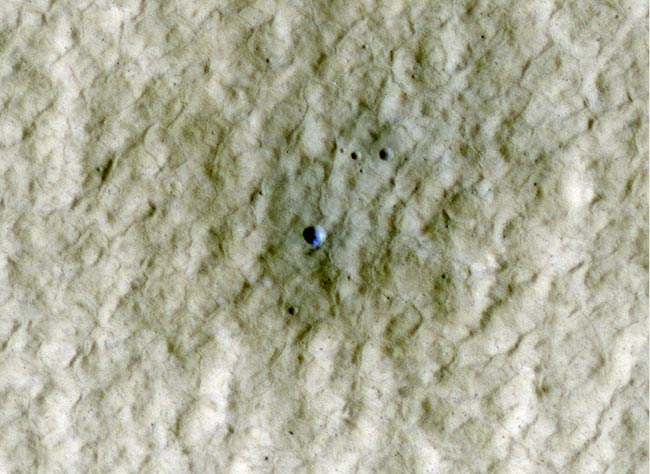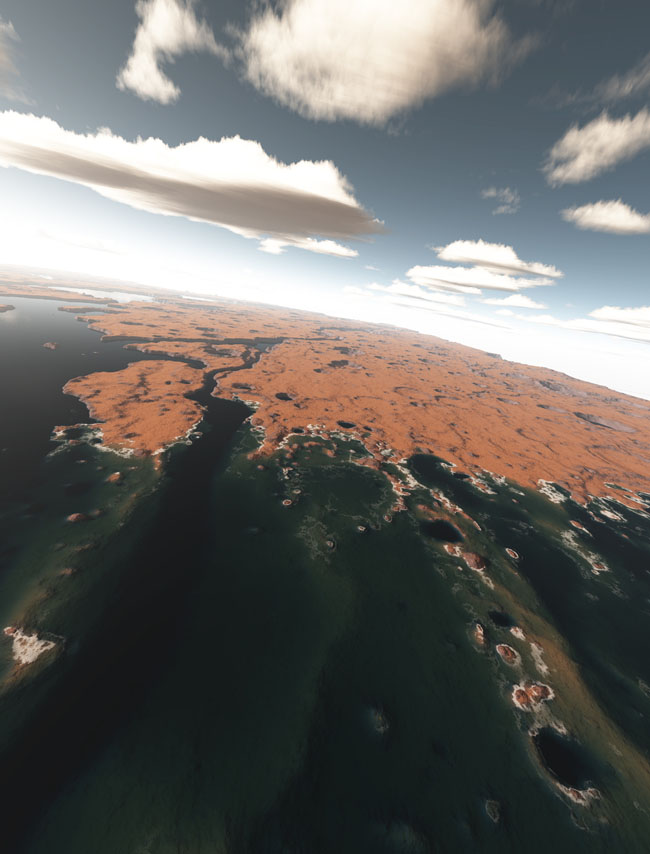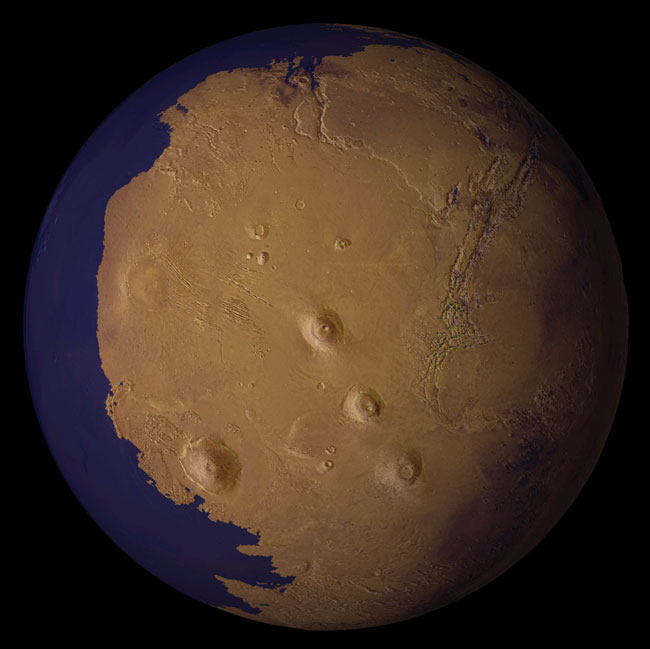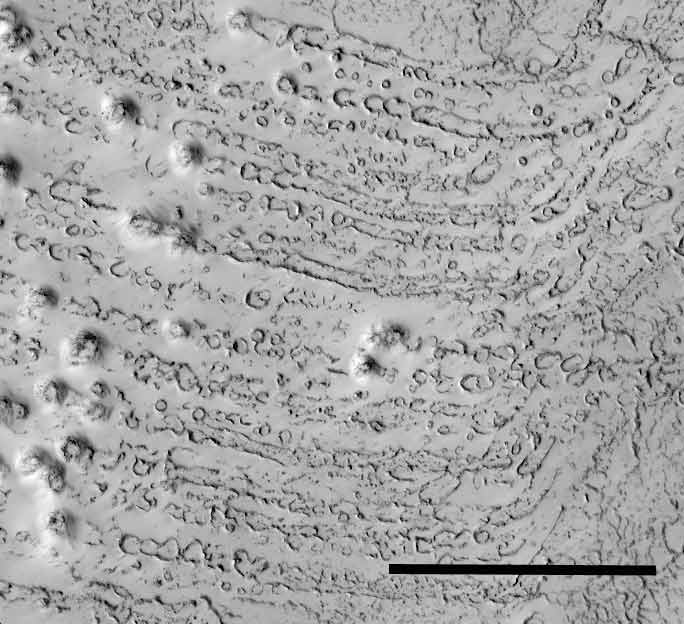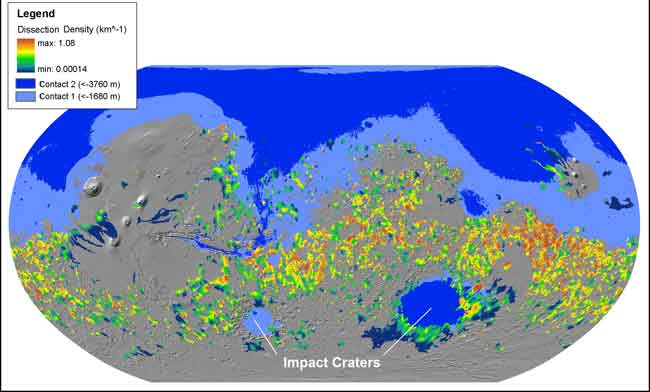Photos: The Search for Water on Mars
Giant Pool of Water Ice at Mars' South Pole
This radar map shows the thickness of the south polar layered deposits of Mars (purple represents the thinnest areas and red the thickest). The dark circle is the area poleward of 87 degrees south latitude, where MARSIS can’t collect radar data.
Rivers Might Have Flowed Recently on Mars
In this perspective view looking at the inside rim of Lyot Crater on Mars, a broad lobate debris apron (left) (thought to be a debris-covered glacier) is found amongst water-carved channels. The authors argue that these ice-rich units underwent melting in the relatively high-pressure environment provided by Lyot Crater, the deepest point in the northern hemisphere of Mars.
Flashback: Water on Mars Announced 10 Years Ago
The floor and banks of a Mars gully on the northwest wall of a crater in Terra Sirenium changed between December 2001 and April 2005 due to a distinct light-toned material that flowed down the slope and formed a deposit (top). The same change occurred in a crater in the Centauri Montes region (bottom).
Water Flowed on Mars More Recently Than Thought
Melting glaciers spawned rivers on Mars as recently as several hundred million years ago. This image shows a river that sprang from a past glacier from an unnamed crater in Mars’ middle latitudes. Full Story.
Young Mars Crater Contains Water Ice, Photo Shows
At the center of this view of an area of mid-latitude northern Mars, a fresh crater about 6 meters (20 feet) in diameter holds an exposure of bright material, blue in this false-color image.
Oceans of Ancient Mars May Have Sprung From Slow Leaks
The ancient oceans or seas thought to have covered ancient Mars 3 billion years ago, as shown in this artist's rendition based on actual topography of Mars from NASA Mars Orbiter Laser Altimeter, may have sprung up through surface cracks.
Mystery Solved: Mars Had Large Oceans
A view of Mars as it might have appeared more than 2 billion years ago, with an ocean filling the lowland basin that now occupies the north polar region.
Breaking space news, the latest updates on rocket launches, skywatching events and more!
New Evidence Suggests Icebergs in Frigid Oceans on Ancient Mars
Chains of crater marks on Mars such as these could have been made by icebergs rolling across ancient Martian ocean floors, researchers suggest.
New Map Bolsters Case for Ancient Ocean on Mars
This is a global map depicting the dissection density of valley networks on Mars, in relation to the hypothesized northern ocean. Two candidate sea levels are shown: contact 1 with mean elevation at -1,680 meters and contact 2 with mean elevation of -3,760 meters.
Hope for Water on Mars Dims with Sharp New Images
Boulders over northern lowland terrains on Mars.

Space.com is the premier source of space exploration, innovation and astronomy news, chronicling (and celebrating) humanity's ongoing expansion across the final frontier. Originally founded in 1999, Space.com is, and always has been, the passion of writers and editors who are space fans and also trained journalists. Our current news team consists of Editor-in-Chief Tariq Malik; Editor Hanneke Weitering, Senior Space Writer Mike Wall; Senior Writer Meghan Bartels; Senior Writer Chelsea Gohd, Senior Writer Tereza Pultarova and Staff Writer Alexander Cox, focusing on e-commerce. Senior Producer Steve Spaleta oversees our space videos, with Diana Whitcroft as our Social Media Editor.
